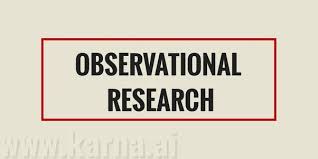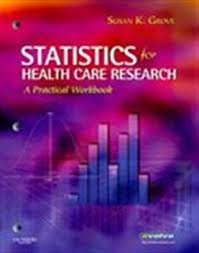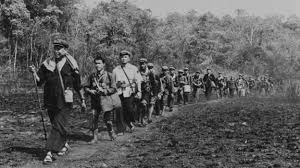
Human Dignity and Forced Adoption
Order Instructions:
Human Dignity and the forced adoption policy in Australia in the 50?s, 60?s and 70?s.
How is the case study on forced adoption in Australia in the 50?s, 60?s and 70?s and issue of human dignity?
From the case study presented.
Explain why you believe this to be an issue where human dignity is a critical factor.
Analyse at least two perspectives on this particular case. The following questions should act as a guide in your analysis.
1. What understanding of the concept of human dignity appears to be at work in each perspective?
2. What are the social attitudes, norms, or circumstances that may have influenced each perspective? To what extent do these social attitudes, norms, or circumstances impact on the understanding of human dignity in each perspective?
3. How does each perspective justify particular actions or choices with reference to human dignity?
4. In this unit, we have considered human dignity and the human person as multidimensional. If you consider in isolation the argument of each perspective in turn, what aspects of human dignity could be jeopardised by any actions arising from those perspectives?
5. Evaluation of the implications and consequences of adopting a perspective in isolation
Perspectives are:
Perspective 1: The practice of forced adoption makes a false distinction between the capacity of young, largely unwed, mothers to raise their own children, and the capacity of married, more financially secure, mothers, to do the same. The practice of forced adoption hindered these young mothers from demonstrating their innate dignity.
Perspective 2: The shame and guilt, felt by women who found themselves pregnant out of wedlock and were forced or coerced into give up their babies, resulted in their loss of dignity. The national apology was intended to restore this lost dignity.
Perspective 3: Social mores in the 1950s, 60s and 70s deemed women in particular situations to be unfit mothers. The perceived immoral actions of unmarried pregnant women led them to be treated without dignity.
SAMPLE ANSWER
Human Dignity and Forced Adoption
Life is all about getting a life that one would be proud of and would like our future generations taking part in. Majority of people would love to get married and have a family with their spouses and enjoy the fruits of their labor, however, there are those that are not able to enjoy that luxury. There are the ladies and girls that had boyfriends that did not want to wait for marriage or take part in safe sex. These ladies are those that society has come to look down upon because they most often than not end up being ladies that have children out of wedlock. However, despite the fact that society would look down upon them, they still would love to be the proud mothers of their own children. There is the freedom in today’s society that one is given that allows them to put up their children for adoption of their own free will. But take a step back and imagine the lady that does not have the luxury of making such a choice for herself. She is forced by society to give up her child because she is not married (Quartly, Swain & Cuthbert, 2013). The act is inhumane and goes against all the threads that a mother would have on her body. It is a sign that the lady was not dignified in having a child and being called a mother because she is not married. Such was the case in Australia. The aim of this thesis is to echo the fact that the forced adoption of children that was carried out in Australia was an action of human indignity.
The idea that there was a form of distinction between a mother that was unwed and young and one that was married and more financially secure in their capacity to be good parents was a distinction that was entirely false (Marshall & McDonald, 2001). In the 1950s, 1960s and 1970s, there was the belief that a child would be better raised by parents that were married and in a family. It was a belief that emerged when majority of the children that lived in the streets were mainly from broken or single parent households. This resulted in there being a different understanding to the life that a child would have. It may be true that a parent that is more financially secure and married is able to give their children a better life than one that is unwed. However, this is just a distinction that is made based on the size of bank that the mother may have and the things that may be bought with the money, but such is not always the case (Kateb, 2011). Some parents that are well off should be able to give their children the love and care that they deserve but such is not always the case.
These parents may give their wealth to other vices that would make their children turn to other vices and works so as to get the things that they do not receive at home. Thus is the reason why girls look to relationships with older men to find love that they should receive at home (Spark & Cuthbert, 2009). Most mothers that are unwed most of the times give the best care to their children because they know the difficulties that lie in the world better than the parent that is financially secure. These mothers would be better in the care of these children but the forced adoption that was enacted between the 50s and 70s was a sign that the Australian government did not believe in this. Thus pointing to the false distinction in the care offered by unwed mothers and those that were wed and financially stable (Josephs, 2008). The distinction was one that was baseless. It as an act that hindered these ladies from proving their capability of being parents and this stripping them of their dignity.
Society believes that it is unacceptable to have a child that is out of wedlock. This has pushed the second perspective on forced abortion. The fact that society has come up with a norm that there has to be a family that will readily take care of the child when born, us something that has pushed most women that have become pregnant from premarital sex to look down upon themselves (Frame, 1999). This is a fact that has resulted in the perception that most women that become parents from premarital sex are not fit to be parents of any child and thus being coerced into giving up their children up for adoption despite the fact that they too can raise the children as their own (Swain, 2011). These words and norms that society has had engraved into their brains has led to the breaking up of prospectively peaceful and model homes for people and children. Furthermore, in claiming that single mothers could not provide for their children, the government and the people in Australia were generally but indirectly claiming that these women did not have what it takes to be parents. Thus they too last dignity for themselves as parents as well (Ford, 2013).
1950s, 1960s and 1970s were the times when life was cheapest and that the minds of people were geared towards a particular thought and were not ready to question them for being’ old school.’ The activities that were carried out during these years were those that looked down upon the people that had managed to get pregnant from the men that they had in their lives. These very thoughts that people had been brought up believing and holding dear to their hearts were the very same ones that would break these mothers. When a mother that was not married was identified by society, she was termed and labelled as an immoral person that the people would end up avoiding and looking down up as being people that were not acceptable in the society that was meant to be growing (Cuthbert & Quatly, 2012). The treatment that they were exposed to as far from dignified because the public could not dare to question the norms that they have brought up with but could only just look at the norms and judge based on what they would have seen as being regular. These actions would not only break the spirits of these mothers but as well make them to look down upon themselves and be treated without dignity. The norms are the pillars that led to the improper treatment that the women were exposed to.
In the study of the forced adoption that the mothers were being put through, a deeper understanding of the dignities that were being deprived from the women. To do so, a quadrant understanding of human dignity is employed. First there is the dignity that humans already have which is further split into two aspects: being human and the possession of one or more human capacities. Under being human the lady should be given the dignity that by being a human she has the right to still be able to give birth to a child despite the fact that she is not married or financially stable. The second is that although she has gone through with the act of having sex before she is married, she still has the capability of being a good mother. The second half of the quadrant is the fact that she has dignity that may be lost or acquired. This is further classified as being in a position whereby she has a sense of self-worth. These ladies in Australia were stripped of this dignity because the pride of being a mother was taken away from her because society did not see her fit to parent because she was pregnant before wedding. Finally is the moral or immoral aspect of the dignity quadrant. The mothers were deprived of their civic duties of ben loving mothers. It would have been better that if society looked down upon these mothers it still allowed them to raise their own children because this is what any mother would love to do.
Finally, dignity should not be viewed from one dimension but from multiple aspects. While human dignity is inherent, we are also called to realize our dignity from the way in which we lead our lives and thus the fact that dignity was being looked at from one scope, it deprived the mother of raising her child as her own ad looking at her life and the decisions that she has made and cause her to change her view of her actions, resulting in a different state of mind in future.
In conclusion, the acts of forced adoption were acts if indignity and were not things that had basis. The ladies were treated badly there is nothing that is more flimsy than an apology. These women would be better dignified if they are given information on the whereabouts of their children rather than an apology. Forced adoption was an act that should not have been in existence but the fact that it was carried out for more than 30 years, these mothers need to be treated well, despite the fact that nothing can undo the mental, psychological and maternal pain that they endured (Brugger & Kristen, 2013).
References
Brugger, W., & Kirste, S. (2013). Human dignity as a foundation of law (1st ed.). Stuttgart (Franz Steiner Verlag).
Cuthbert, D., & Quartly, M. (2012). “Forced Adoption” in the Australian Story of National Regret and Apology*. Australian Journal Of Politics & History, 58(1), 82–96.
Ford, D. (2013). Australia apologizes for forced adoptions. CNN. Retrieved 1 June 2014, from http://www.cnn.com/2013/03/20/world/asia/australia-forced-adoptions/index.html
Frame, T. (1999). Binding ties (1st ed.). Sydney: Hale and Iremonger.
Josephs, I. (2008). Forced Adoption (1st ed.). Lulu.com.
Kateb, G. (2011). Human dignity (1st ed.). Cambridge, Mass.: Belknap Press of Harvard University Press.
Marshall, A., & McDonald, M. (2001). The many-sided triangle (1st ed.). Carlton, Vic.: Melbourne University Press.
Quartly, M., Swain, S., & Cuthbert, D. (2013). The market in babies (1st ed.). Clayton, Vic.: Monash University Publishing.
Spark, C., & Cuthbert, D. (2009). Other people’s children (1st ed.). North Melbourne: Australian Scholarly Pub.
Swain, S. (2011). Adoption, Secrecy and the Spectre of the True Mother in Twentieth-Century Australia. Australian Feminist Studies, 26(68), 193—205.
We can write this or a similar paper for you! Simply fill the order form!












